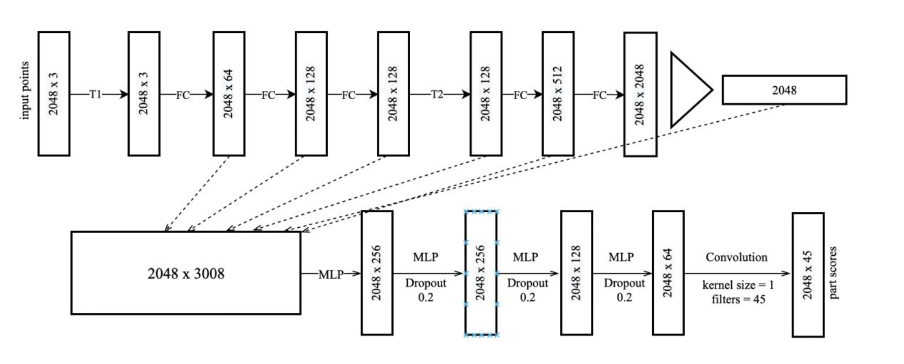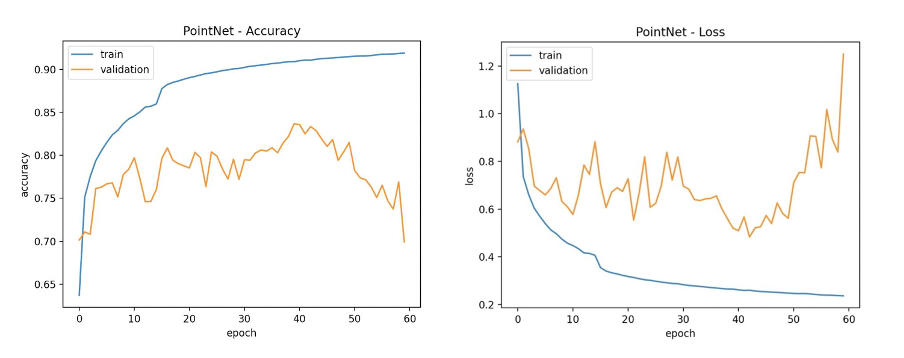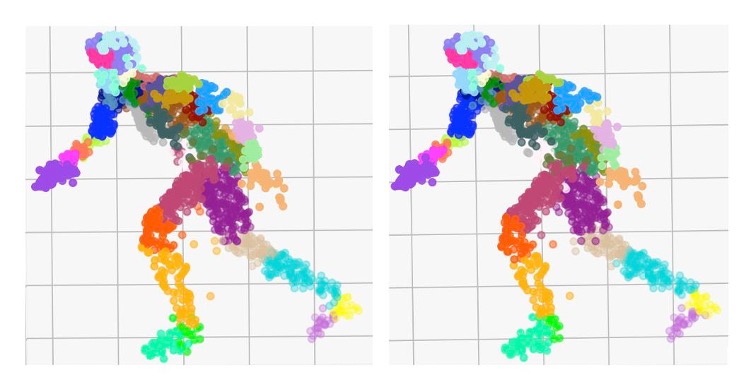PointNet
One of the models we implemented is PointNet. Specifically, we were inspired by an architecture that focuses on part segmentation. We can see the architecture of our implementation in figure below, while the upper layer of the set is unchanged compared to the original design. The modifications we have made concern MLP layers. We changed the number of filters in these layers, we added another multi layer perceptron. We also added a dropout to reduce overfitting. Layers T1 and T2 are transformation networks that serve to transform the input into a canonical form, and FC are fully connected layers operating on each point of the point cloud.

PointNet was trained on input data from point clouds, while tracking loss and accuracy. We set the initial value of the learning rate to 0.001 using the piecewise constant decay scheduler, which changes this learning rate across different invocations of optimizer functions. The training duration of the model we implemented was 60 epochs.

When evaluating the PointNet model we implemented, we achieved an overall accuracy of approximately 85.4% and the resulting loss reached a value of approximately 0.44. In the following Figure are visualized two point clouds. Both are subsampled to 2048 points and segmented into 45 human body regions, which are color-coded. The point cloud on the left has the role of ground truth and the point cloud on the right is the result of the neural network prediction of the model we have implemented.
